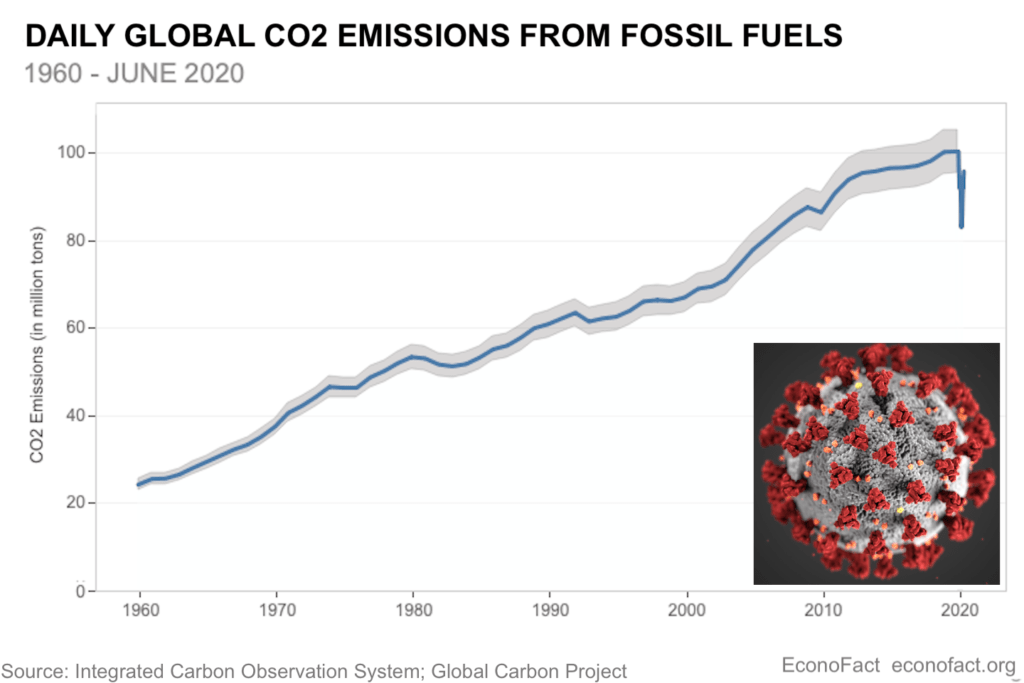
Covid-19’s Impact on the Environment
By: Harry French
Over the past year the world had been shaken by the Covid-19 Pandemic. Regardless of who you are, chances are the pandemic has had some type of impact on you and how you would go about your day to day activities. Wearing masks, working from home, online classes, etc. the pandemic has caused changes like this across the world. All of these changes have clearly had impacts on us, but how did Covid-19 affect the environment?
When the shutdowns and quarantines happened much of the world came to a standstill, including industry and transportation across the globe. This sudden stop led to a drastic change in the amount of emissions released into the atmosphere. Some of the most prominent sources of CO2 emissions saw significant drops last year, with the US experiencing a 12% drop, the EU experiencing a 11% drop, as well as a 1.7% drop in China (CarbonBrief). At the height of the pandemic daily global emissions saw a significant drop of around 17% (CNBC). In fact this was the largest absolute drop in emissions ever recorded, and the largest relative drop since the end of World War 2 (CarbonBrief). This type of drop without a doubt wouldn’t have happened without the pandemic.
But with all these numbers and percentages you might be wondering what these drops in emissions may mean for the environment on a longer scale. When looking long term the news is not very positive, as there will likely be next to no lasting physical effects. There are two major reasons why these massive drops will have relatively little impact on the environment. The first reason is that the decrease in emissions was not sustained for a long period of time, and therefore by environmental standards, the effects are negligible at best. Secondly though these drops are historic in their totals, the amount of carbon emitted into our atmosphere matched the emissions in 2012 (CNBC). As a whole the scientific community is viewing Covid-19’s effect on atmospheric carbon levels as more of a footnote than a historic turning point for climate change. The World Meteorological Organization or WMO has described this drop in emissions as just simply a blip in the record. In order to have any real impact on environmental carbon levels, there would need to be “a sustained flattening of the curve (BBC).”
As the pandemic comes to an end and life finally returns to normal there will be plenty of reasons to celebrate, seeing friends regularly, being able to attend classes in a classroom, among many other things. It also means sources of emissions will be running normally and the climb of carbon in our atmosphere will continue. This outcome, however, is not all doom and gloom. While this “blip” will not have lasting physical effects, we have seen that we can have profound effects on our emissions. Moving forward it is important that we consciously consider this and make an effort to limit our footprint.
